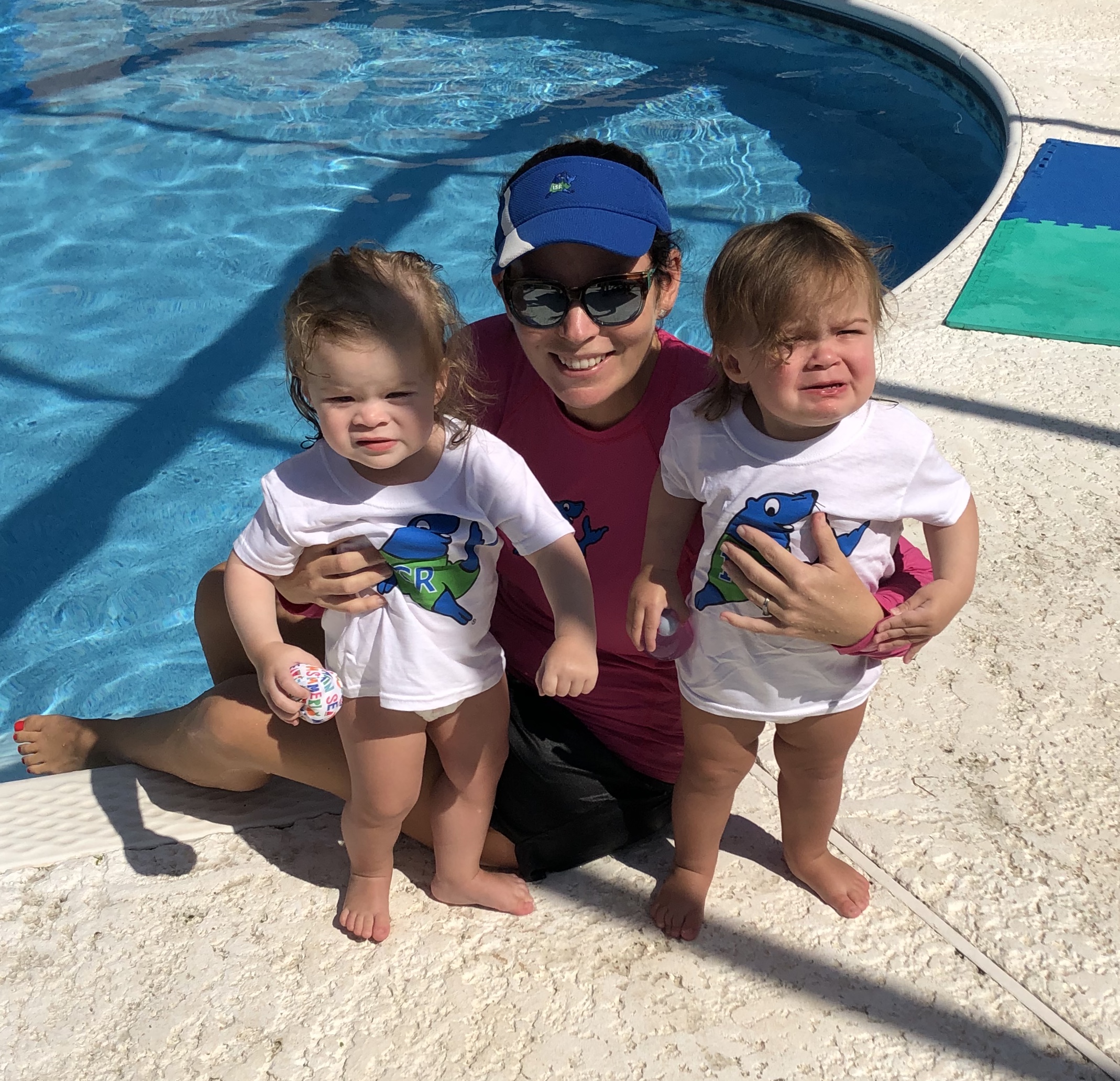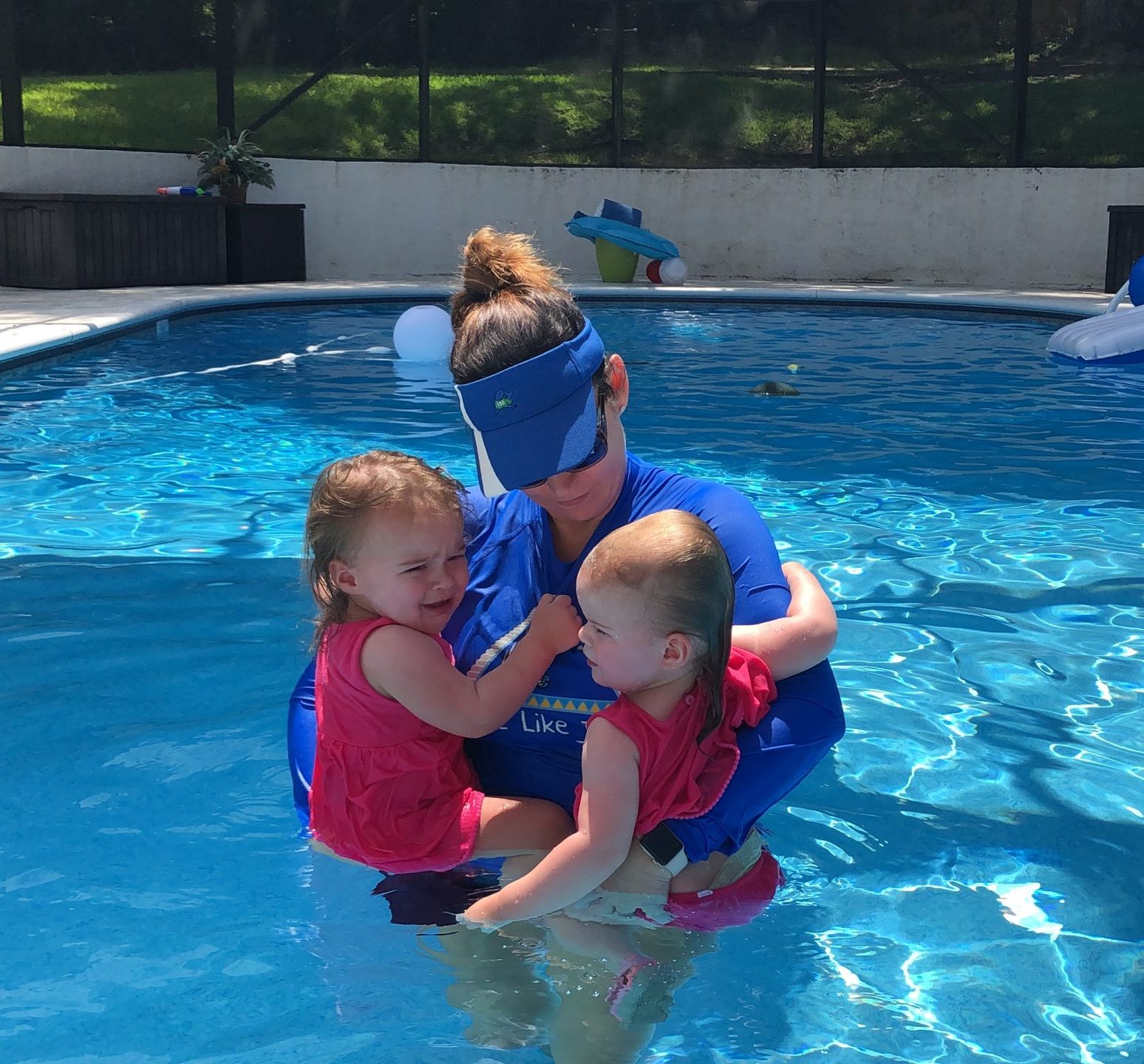
May 15th is International Water Safety Day. This significant day is dedicated to “help spread global awareness of the ongoing drowning pandemic and educate the youth in becoming safer in and around water. It is a day to spread drowning awareness, and water safety education by any means possible. The lack of water safety education has propelled drownings worldwide. Through interdependence, we can change that.” (International Water Safety Foundation)
Drowning is the #1 cause of accidental death in children aged one to four.
READ THAT AGAIN.
My husband and I were outnumbered. When we added our singleton, Blaire, to the family, just 12 months after our twins, I knew we had to do something to provide a layer of protection for our children around water.
Thankfully, we chose ISR, Infant Self-Rescue lessons.
I knew classes filled up quickly in our area, and there were only a few instructors, so we contacted Suzanne Straub early in the year. ISR is different from traditional swim lessons, and there is a lot of misinformation spread about the program. Read: YOUR CHILD WILL NEVER BE DROPPED INTO THE WATER. Our twins each had 10-minute, individualized lessons, five days a week, for six weeks. The length of the course depends on the age and skill of the child.
Was it A LOT logistically, as a mother of three? Yes!
Was it worth it? YES!
I felt uber confident in my choice of Suzanne as our instructor because she was also a registered nurse. While every ISR instructor goes through intensive training and is required to complete additional yearly education, there’s something about the bond between nurses. I could see her watching each of her students intently throughout lessons. She knew exactly what to look for regarding signs of distress. While teaching, she continuously checked capillary refill for temperature, abdominal distention for possible water inhalation, and parents recorded daily “in & out” consumption data which provided vital information she would use to individualize each day’s lesson for the child. She had “nurse eyes” and I knew she would protect my daughters.
I trusted her with their lives, literally.

I will be completely honest – after the first day of lessons, I told my father (who accompanied me with my 20-month-old twins and 8 month old) that I didn’t want to go back. I was “done.”
The tears, the screams, the shaking- both mine and theirs. I can still vividly picture it in my head now. I had never experienced my children truly crying out for me in fear, and that’s what was happening. Was I doing the right thing?
My mama heart was shattered, but we persevered and returned the next day. I am so glad we did.
Suzanne was a lifesaver and such an amazing teacher for our girls. She assured me this was “normal” behavior. To me, as the parent, it wasn’t “normal.” But, to her, as the instructor, she had seen this time and time again.
The goal of ISR Self-Rescue lessons is survival.
Children are taught life-saving skills to ensure that they can save themselves if they encounter a problem in the water or happen to fall in. The focus is on floating and keeping their head above water in a calm manner. This position permits the child to breathe and rest while in the water. Our girls were instructed in the swim-float-swim sequence, as are most children between the ages of one and six years old.
The girls were taught to swim in a horizontal position with their head in the water, roll afloat for a breath and/or rest, and then roll back to swim until they have reached safety. It was amazing to watch their progress each week with breath control and general maneuvers. Eventually, they learned to effectively take a breath before they were submerged and could hold their breath underwater.
As I mentioned, Evelyn and Sloane had individualized lessons each day. They were one-on-one with Suzanne, who had been trained and certified. Through research, it has been found that young children learn best through daily consistency and repetition, which is the reason for 10-minute lessons, five days a week. It ensures maximal muscle learning and prevents fatigue in the child.
Each lesson is progressed with precision and dictated by each child’s own learning style.
The girls’ reactions to each lesson were certainly their own. Sloane started yelling the moment we pulled into the driveway; Evelyn waited until the first dunk underwater to release her screams.
ISR lessons are to help prepare your child for multiple life circumstances. Near the end of instruction, your child is taught how to save themselves fully clothed. The research behind this supports that not all water accidents are when a child is in a swimsuit. To ensure the application of their survival skills to different situations, the instructor holds final lessons with your child in shoes, summer, and winter clothes. The added weight of the clothes and shoes forces your child to rely on sensory-motor input and adjust to the unknown, which betters their chances of survival in the case of an accident.
I never realized the weight of pants and a jacket on a small child until that very day. It was eye-opening, to say the least. With summer’s arrival, we all aim to keep our children safe. One way to do so is through ISR, Infant Self-Rescue lessons. ISR acknowledges that no child is drown-proof and all require adult supervision in the water, but it is their mission to help children save themselves when other barriers fail.
Their motto “not one more child drowns,” says it all.
ISR offers classes nationwide. To find out more information and locate an instructor near you, visit their website.
 Helpful water safety tips from Suzanne Straub, ISR instructor:
Helpful water safety tips from Suzanne Straub, ISR instructor:
-
Wear bright colored life jackets when in open water (orange, red) and stay away from colors that blend with the water (blue/green)
-
Ensure safety measures in homes with pools; there should always be a self-closing gate around the entire pool.
-
Do not leave toys in pools because children are tempted to reach for them and could fall in Exterior doors leading outside should have high locks and pool alarms installed on the door.
-
ALWAYS keep eyes on children when in or around water
-
Assign a “water watcher” (an adult) at gatherings; alternate “water watcher” every 15 minutes.














